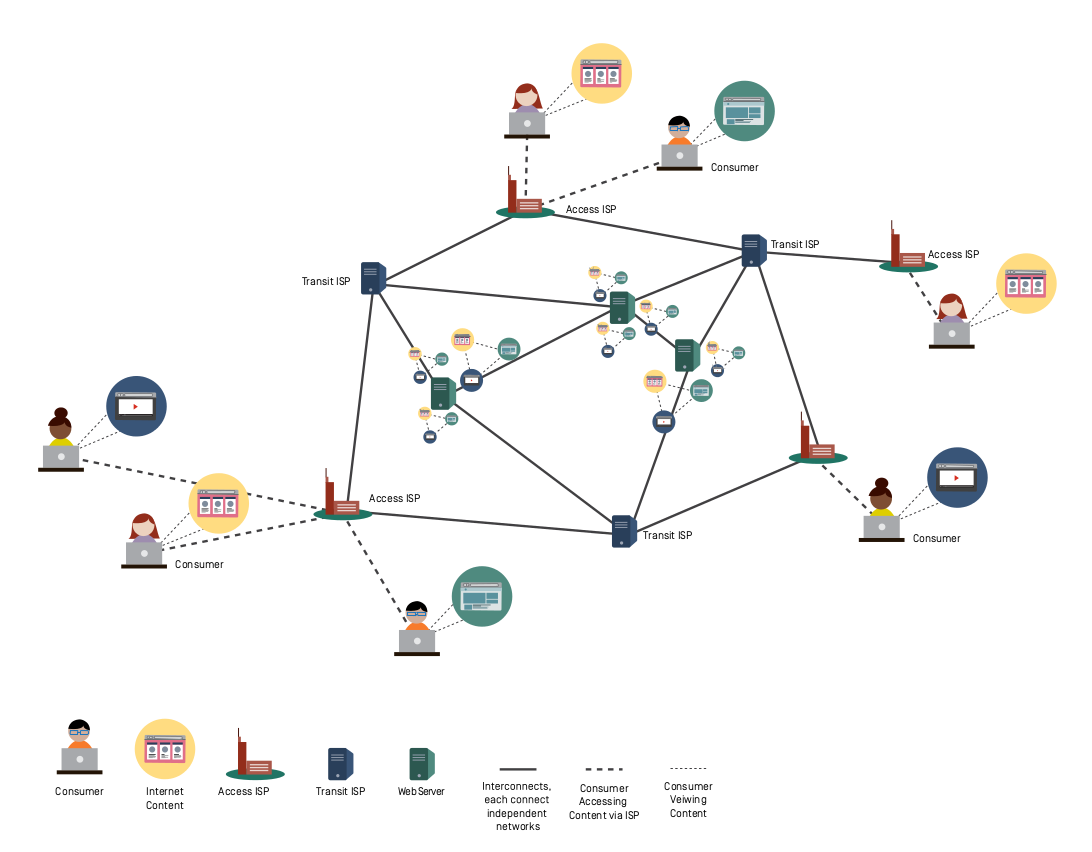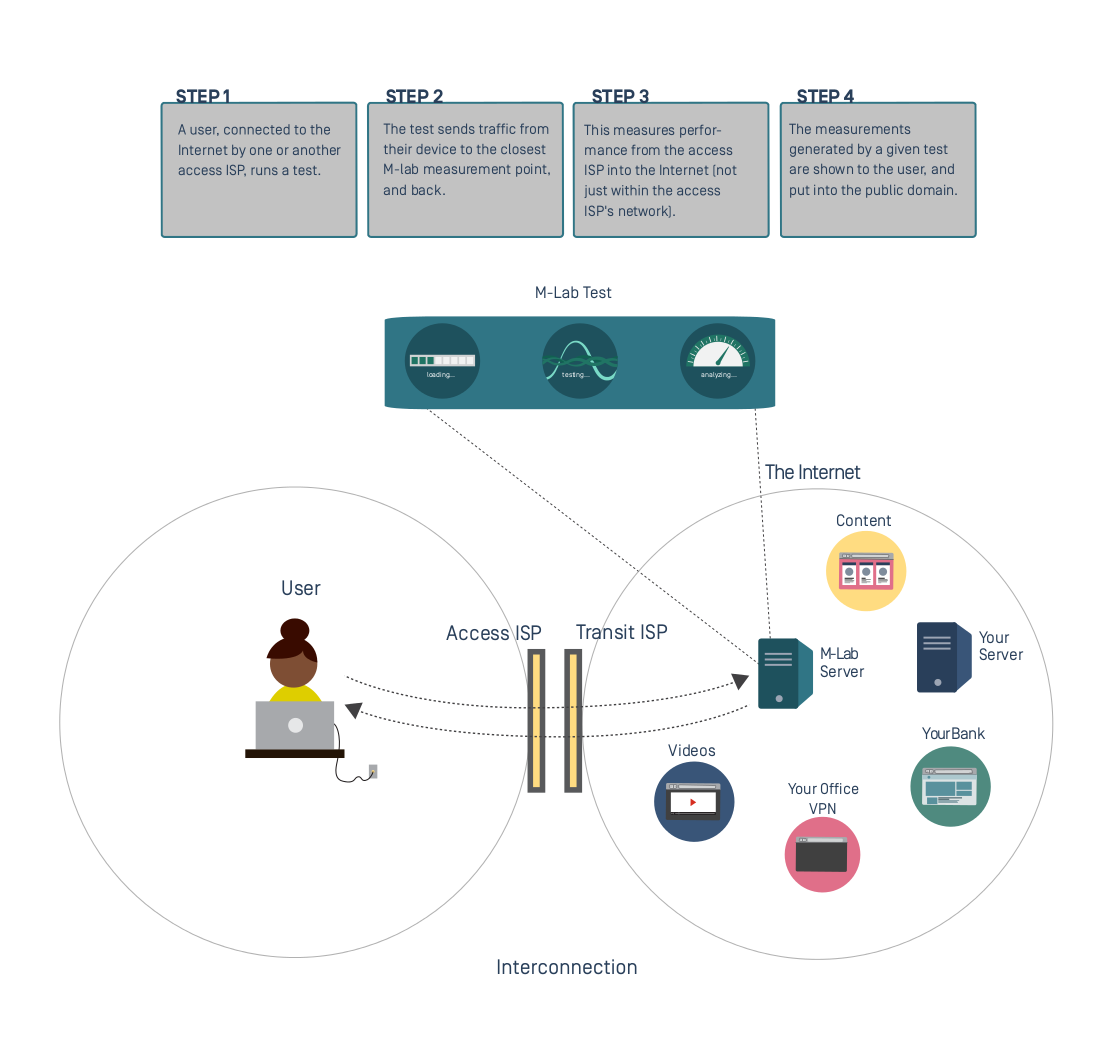M-Lab and the Topology of the Internet
Whenever we use a computer, a smartphone, tablet or other connected device to go online, we’re accessing our content and services via a collection of networks owned and operated by many organizations and companies across the world. The Internet is an interconnected mesh of separate networks. From a US consumer’s perspective, we buy Internet service, and once it’s hooked up, our ISP (say Verizon, Comcast or Time Warner) lets us connect with everything on the web. To be able to provide us this vast access, our individual ISP must connect to the rest of the Internet. This happens via “interconnection.” Our ISP connects to other, less well-known ISPs that we refer to as transit providers. The points at which transit providers and access ISPs meet and exchange traffic are called “interconnection.” What this means is that the performance we get to our favorite sites and services is determined by many factors, including the relationship between our access ISP and the transit ISPs that it interconnects with.

M-Lab choses the locations of its measurement points carefully, placing them inside transit ISPs that interconnect with many other ISPs. This provides a representative location at which it’s possible to measure representative performance as experienced by end-users. In other words, when you run an M-Lab test, the measurement of your connection replicates the experience you have many times daily – crossing the boundaries of networks and infrastructure owners to download a webpage, or access a file, etc.. This ability to get whatever is hosted on the Internet, from anywhere connected to the Internet, is fundamental to how the Internet functions. Without it, the Internet is not longer in inter-network, and is instead an intra-network.
